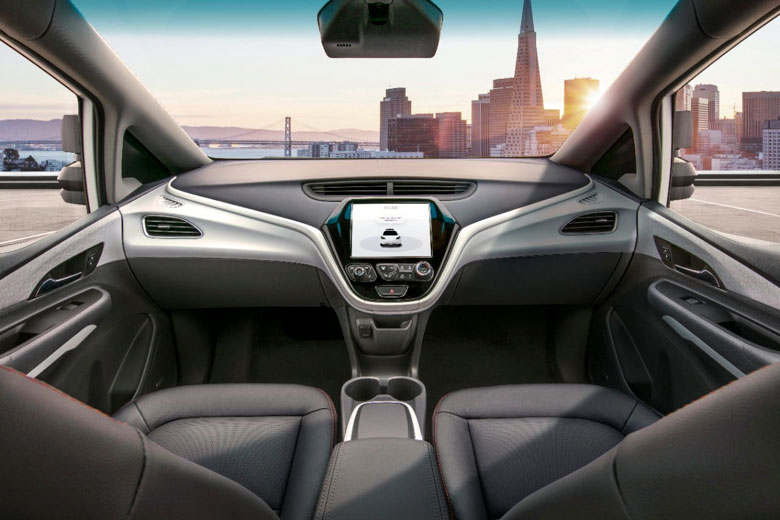
Self-driving car manufacturers, or SDCMs, are looking to make ownership of autonomous vehicles easier and more affordable for consumers, and they’re taking a rather innovative path in getting there. Insurance. Can you fathom a time when your insurance continually goes down instead of up? It’s hard to fathom, right? However, if SDCMs expand to the car insurance business, this may very well be a reality.
1. Barriers
It’s not all altruistic on the manufacturer’s part. Intertwining with insurance helps the manufacturer just as much as the consumer. An adoption barrier exists for usage of self-driving vehicles. This is particularly true when it comes to everyday private drivers and transportation “taxi” vehicles.
Insurers may not offer insurances for autonomous vehicles at all or price it at unaffordable levels. After all, since autonomous vehicles aren’t on the market yet, there’s no statistical data on accidents, injuries, and fatalities for the insurer to even base pricing upon. This means they’ll likely rollout coverage at the highest price point possible to cover themselves, and that’s a big deterrent for any buyer and a big problem for any manufacturer.
The good news is that SDCMs will have their own data centers concerning statistics on accidents, injuries, fatalities, and even near misses in relation to their own line of self-driving vehicles. They’ll be able to collect and analyze this information at any given time and generate more appropriate auto insurance quotes for their own automated vehicles. By being both the seller and mandatory protection source of the good, SDCMs will knockdown the insurance barrier of availability and affordability for both their own interests and those of the consumer.
2. Build Consumer Confidence
While self-driving vehicles have long made appearances in movies and books, they’ve yet to be tested out in real life by consumers. Buyers simply have no idea what to expect nor if autonomous vehicles are a safe and reliable investment. What better way for a manufacturer to say their confident in their product than to insure it themselves?
3. Enhanced Consumer Car-Buying Experience
Few, if any, delight in the thought of shopping for the best auto insurance quotes. With SDCMs offering insurance at purchase, the consumer can completely skip the middleman insurer and the entire painstaking insurance search and comparison process. Insurance would be available immediately at purchase and help offset the total cost of the vehicle, too.
4. Unified Pricing
The entire insurance process will be greatly simplified for self-driving vehicles. Most insurance pricing revolves around caveats of the driver – driving record, age, gender, and so forth. Adjustments are made for probability of human error, too. With autonomous vehicles, however, insurance will not have those revolving doors of ifs. Pricing will simply be based on the vehicle itself, or rather based on the software and hardware installed.
If the technology is the same in a given self-driving vehicle, then the price of insurance will be the same whether it’s senior with a few accidents on their record, a newbie driver with no experience, or a businessman logging hundreds of miles each day.
5. Drives Insurance Prices And Liabilities Down
Autonomous cars can be commercialized after SDCM’s prove that they’re safer than cars driven by humans, which will then enable SDCM data banks to determine precise probabilities for accidents and the resulting costs.
Did you know that IBISWorld reported that auto insurance was a $259 billion dollar industry in 2017? To put into perspective just what a huge marketplace that is, the entire U.S pharmaceutical industry was valued at $446 billion in 2016.
Insurance costs will drastically decline with SDCMs focused on accident prevention and offering insurance prices based on real-time accident and fatality data. This should simultaneously expand the market and make car ownership more affordable for everyday consumers.
The insurance reduction in cost shouldn’t just be a one-and-done situation, either. Consumers should see continued drops in insurance pricing as car manufacturers and software vendors publish updates and releases to the safety of the self-driving vehicles.
As Beth Buczynski pointed out in her article “With Self-Driving Cars, Auto Insurance’s Time Is Limited,” it’s also important to note that liability will also be altered by self-driving cars on the road. The shift in liability will be from human drivers to the companies utilizing the vehicles for taxi services and the SCDMs making and insuring them.
In closing, SCDMs branching off into the insurance market is a win-win for both manufactures and consumers, and it could be just the solution to help get mass autonomous vehicles on the streets sooner rather than later.
 About the Author
About the Author
Danielle Miller is Personal Lines Representative at New Jersey Manufacturers Insurance Companies. Danielle assists with questions about auto policies, including billing questions & policy.changes.
Scott Ellyson, CEO of East West Manufacturing, brings decades of global manufacturing and supply chain leadership to the conversation. In this episode, he shares practical insights on scaling operations, navigating complexity, and building resilient manufacturing networks in an increasingly connected world.